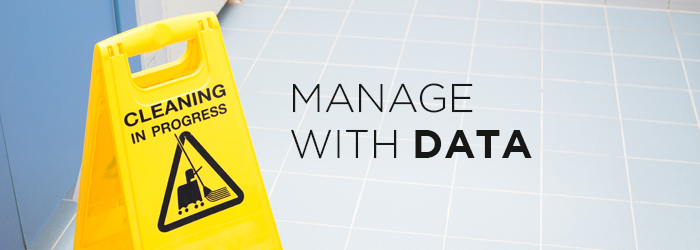
Bring customers back with data-driven facility management
Well maintained facilities are important to your customers. It is found that clean facilities influence both customer satisfaction and retention. In a retail study, 93% of surveyed customers who switched to a competitor reported that they would return to a store if the store improved the cleanliness of its facilities.
In other industries, such as airports, tidy facilities are also extremely important. Clean airport facilities, specifically clean restrooms, rank among the top five ways to satisfy passengers. Therefore, airports can strive to surpass their competitors by prioritizing amenities such as facility maintenance, which is proven to generate high customer satisfaction.
Data-driven facility management uses technology to collect information and feedback from customers. Components include on-the-spot customer feedback, people counting technology, real time alerts, and historical data.
Is your business doing what it can to provide clean facilities to your customers? See how you stack up by evaluating the three benefits of data-driven facility maintenance:
Part 1: Optimize your cleaning schedule
Rather than blindly creating cleaning schedules for your facilities based on assumptions about how often a restroom needs maintenance, wouldn’t it be nice to know exactly how often each individual restroom in your facility--whether 1 or 1000--should be cleaned? Are you over-cleaning? Under-cleaning? How can you know for sure?
Real-time data collected and then analyzed over time is the best way to create the optimal cleaning schedule for your staff. Intelligent management solutions use data to offer an ideal cleaning schedule for your business. Systems can count customers as they enter and exit your restrooms and collect real-time feedback from guests and staff to track cleaning activities against customer satisfaction. Are customers suggesting restrooms need attention sooner than your staff is scheduled to clean? How many visitors come through the restroom before service is required? With an accurate dataset of inputs and behaviors, a data-driven facility maintenance system can make smart recommendations for an optimized cleaning schedule.
Part 2: Conserve just the right amount of resources
Optimizing a cleaning schedule is good for your budget and for your customer satisfaction. Your business can conserve resources by knowing exactly what you’ll need to maintain your facility. For example, it is costly and inefficient to clean more often than needed. However, it is difficult to pinpoint what too much cleaning entails without running the risk of exposing customers to an unclean facility.
To provide a clean, hygienic environment that meets the expectations of your customers, you need to know exactly how much resources to put towards facility maintenance. This helps to refine cleaning costs, conserve water, and limit chemical use to only what is needed.
Part 3: Respond to customer input
You know you’re doing a good job at facility maintenance when customers say so. A wall mounted touch screen placed near the exit of a restroom is a great way for customers to easily offer feedback. A simple thumbs up or thumbs down question is all you need to appropriately respond and take action based on customer feedback.
For example, if a customer indicates that the restroom near Gate AA4 is in need of service, you can immediately send someone to address the situation before it escalates and leads to further customer dissatisfaction.
How are you doing with maintaining your facilities? Explore industry-leading maintenance solutions offered by Lavi, including the Qtrac Intelligent Maintenance System.
SUSCRIBIRSE
Suscríbase para mantenerse al día con los nuevos productos, información y noticias sobre los recursos.
ENTRADAS DE BLOG RECIENTES
Clip-Mounted Acrylic Sign Holders
Leer el artículo completoThe Future of Hospitality Queue Management
Leer el artículo completoVideo - Custom Printing with Lavi Industries
Leer el artículo completoTurning Data Into Action: Transforming Airport Queues With Smart Spaces
Leer el artículo completo








